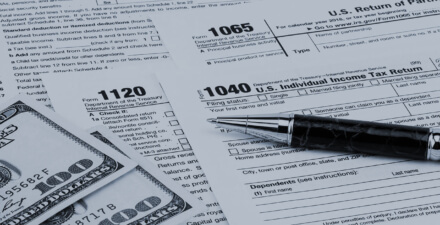Recent working paper explores connection between capital investment and labor demand in the United States

The increasing visibility of artificial intelligence and other advanced technologies in the workplace is drawing new attention to how employers integrate technology into work processes and what effects these decisions may have on the future of work, workers, and the U.S. economy at large. Economists and other researchers are exploring the rise of these new technologies and what it means for the future of work in the United States through research that points the way to more nuanced labor market policy solutions.
In a 2015 article, titled “Why Are There Still So Many Jobs? The History and Future of Workplace Automation,” for example, Equitable Growth grantee and member of Equitable Growth’s Research Advisory Board David Autor of the Massachusetts Institute of Technology explains that popular narratives over the past two centuries have dramtically overstated automation’s ability to replace workers. The degree to which employers use machines to substitute or complement human labor, he writes, depends on a variety of interlocking factors.
Indeed, employers’ decisions about how to invest in capital—such as buying more machinery or implementing new technologies—can have different effects on productivity, wages, and overall employment levels. One area of particular interest is the outcomes of capital investment in manufacturing, an industry that has experienced falling employment in recent years and is the site of policy concerns about the impact of employers’ use of industrial robots and other technologies.
A working paper published earlier this year by E. Mark Curtis of Wake Forest University, Daniel G. Garrett of the University of Pennsylvania, Eric C. Ohrn of Grinnell College, Kevin A. Roberts of Duke University, and Equitable Growth grantee Juan Carlos Suárez Serrato of Duke University provides additional evidence on how these dynamics play out within manufacturing firms, adding a new facet to this debate. The working paper, “Capital Investment and Labor Demand,” explores whether business tax incentives promoting capital investment affect labor demand in manufacturing plants.
The co-authors use data on manufacturing plants from the U.S. Census Bureau to examine the effects of a large corporate tax incentive for capital investment on employment and wages from 2001–2011. The tax incentive they focus on—bonus depreciation—allows businesses to deduct capital investments from their taxable income almost immediately instead of over a series of years and has been in place almost continuously since 2001.
The researchers find that bonus depreciation did stimulate capital investment, but the increase in capital investment neither increased productivity nor lowered employment. Instead, it led to increased employment, but with lower average earnings: Employment increased by 11.5 percent among production workers in industries that benefit the most from bonus depreciation and 8.1 percent among nonproduction workers, but average earnings decreased by 2.7 percent.
Their analysis suggests this positive effect on employment is due to the “scale effect,” which happens when plants increase both output and demand for inputs, as opposed to incentivizing them to replace workers with machines. This led to a greater demand for labor, and thus greater employment at plants with greater capital investment. The effect appears to have increased employment more at plants that also increased the use of industrial robots.
Transforming U.S. supply chains to create good jobs
January 14, 2021
Targeting business tax incentives to realize U.S. wage growth
January 14, 2021
Why did the investment increase employment but decrease wages? The researchers’ analysis suggests that the lower earnings due to the tax incentive are connected to changes in the types of workers hired. The capital investments led to employers hiring a greater share of groups of workers who tend to have lower wages and lower bargaining power—employees who are women, who are Latino or Black workers, who have a high school education or less, and who are 35 years or younger.
The co-authors also find that employers increased capital investment more in plants with lower levels of unionization, as well as in plants located in so-called right-to-work states and in areas with higher labor market concentration—all factors that decrease worker power and weaken wages, and thus lower labor costs for employers.
These findings add additional depth to the discussion around the interplay between capital investment and labor outcomes. The findings also highlight the need for economic research that looks at outcomes for workers beyond overall employment levels—outcomes such as wages, health and safety, and other factors related to job quality and working conditions. This multifaceted approach to research can inform nuanced policy solutions that ensure employers are implementing automation and other new technologies in ways that build high-road supply chains and improve outcomes for U.S. workers in the years ahead.







